by Alison Hugill // July 14, 2023
Valentina Karga’s ‘Prehistoric Posthumans’ (2022) populate the hallways of the Museum für Kunst und Gewerbe Hamburg’s upper floor. The series of small, framed illustrations, minimal in detail but compelling in their candor, remind me of the characters in a children’s book my kids like to read. Bluntly titled ‘I Want My Hat Back’ and ‘This Is Not My Hat,’ the books by author and illustrator Jon Klassen are equally unembellished. For all their attempts at seriousness, the characters in them can’t help but make us laugh. Karga’s “posthumans” have a similar effect: they are at once austere and comical, light-hearted but suggestive of something more troubling.
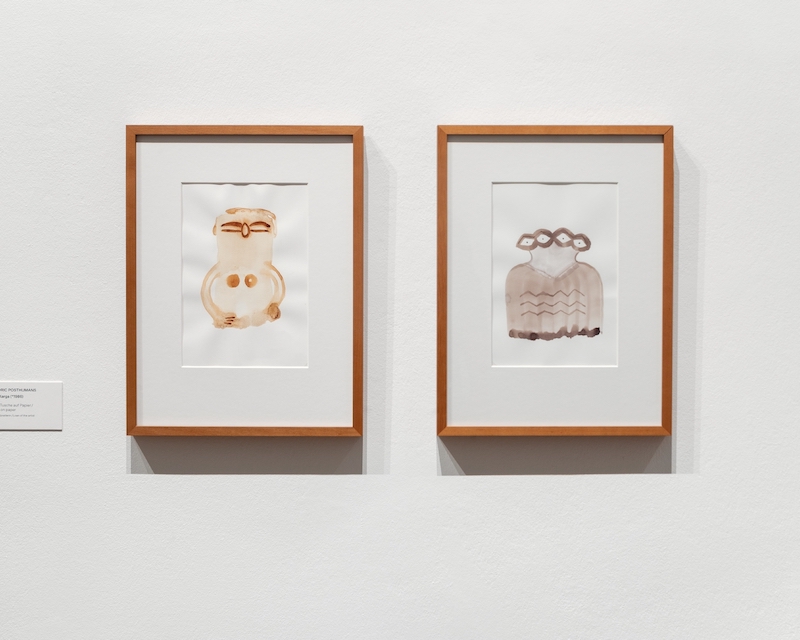
Valentina Karga: ‘Well Beings,’ 2023, installation view at Museum für Kunst und Gewerbe Hamburg // Photo by Henning Rogge, © Valentina Karga
As an introduction to her exhibition ‘Well Beings,’ the figures set the tone for this complexity of emotion that pervades throughout. We’re met with a text at the entrance that situates us in a moment of deep despair: climate change is well underway and we are caught in a so-called “doom scroll” of never-ending bad news. The planet is in peril. On the other hand (but often on the very same channels), we are being marketed an excess of “solutions”: weighted blankets, body pillows, warming pads, white noise. Capitalism never fails to step in with monetizable design solutions for the very problems it creates, and thus the wheels keep turning.
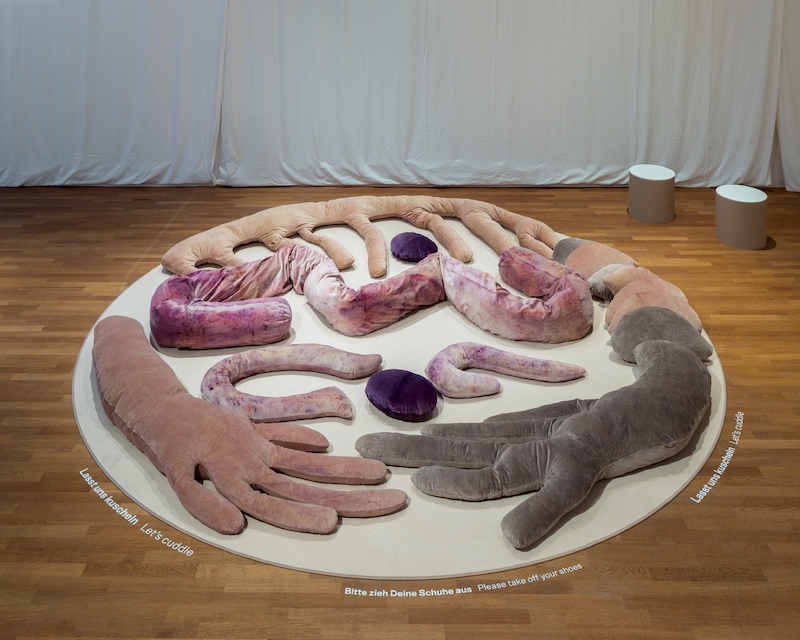
Valentina Karga: ‘Well Beings,’ 2023, installation view at Museum für Kunst und Gewerbe Hamburg // Photo by Henning Rogge, © Valentina Karga
Karga, an architect and designer turned artist, is no stranger to working collaboratively on socially-engaged projects. As such, it was inevitable that her installation here would promote interaction and dialogue. Prompts written on the floor throughout the large room offer suggestions for how we should interact with the pieces. Large lavender-coloured pillows morph into slender hands and fingers, ready to embrace us, and some of the characters we encountered on the walls outside are given new life in cushion form inside. Prehistoric versions of creatures—platypuses, turtles, whales—and some unrecognizable but distinctly “animal” species are reworked as snuggly stuffed toys, and we are invited to cuddle with them, leaving the atmosphere of doom behind.
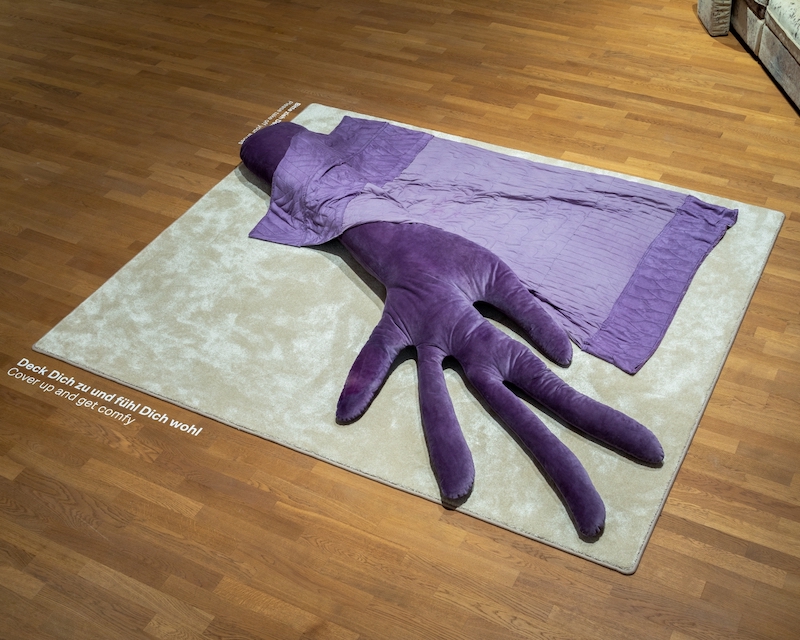
Valentina Karga: ‘Well Beings,’ 2023, installation view at Museum für Kunst und Gewerbe Hamburg // Photo by Henning Rogge, © Valentina Karga
My one-year-old daughter was initially wary of the stuffed beings. Their all-too-natural colours provoked a certain fear in her, maybe even some kind of primordial distrust. This lends credence to my earlier feeling that the “prehistoric posthumans” are not altogether, or not only, friendly. They also reveal something more sinister: perhaps they hint at our own mistreatment of nature, and the inevitability that many species will soon be rendered non-existent. They definitely hover on the edges of understandability—appearing like something we know or have seen before somewhere, but just unfamiliar enough to cause a shift in our levels of comfort.
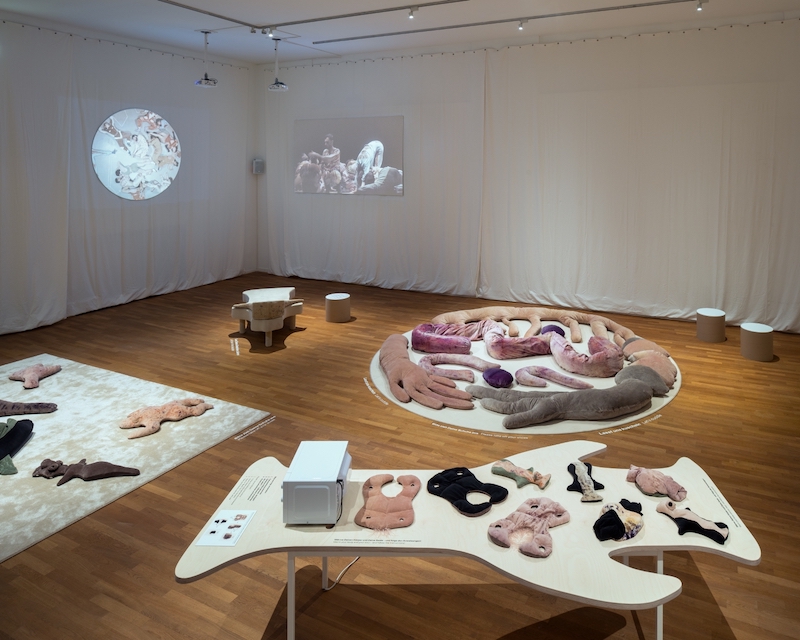
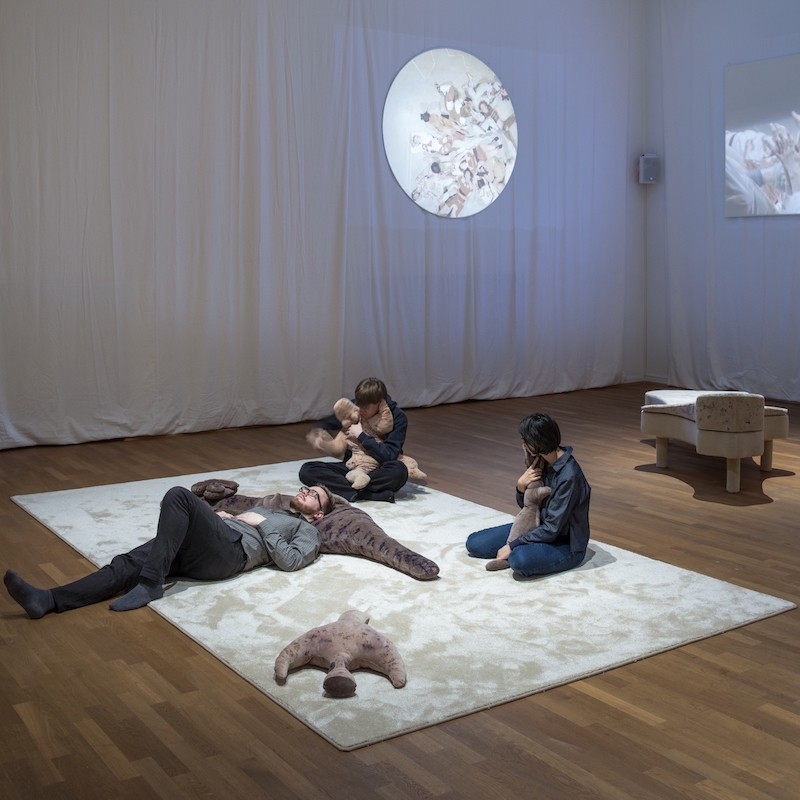
Valentina Karga: ‘Well Beings,’ 2023, installation view at Museum für Kunst und Gewerbe Hamburg // Photo by Henning Rogge, © Valentina Karga
Yet, back in the room, we’re asked to embrace them, these non-human anomalies. And, eventually, we do. A long table holds a microwave, where we can even warm some of them up, unlocking a new level of manufactured coziness. The space moonlights as a temporary oasis of escape, but it doesn’t quite do the job of calming our concerns. If anything, the introduction of climate anxiety as a thematic thread for the installation brings that very issue to the front of our minds. In a video work entitled ‘Adaption’ (2023), projected on a circular, wall-mounted plate above our heads, bodies writhe in unison, as they enact a physically displayed shift in thinking. In a hopeful gesture, a new form of co-existence could be said to emerge from their communal struggle.
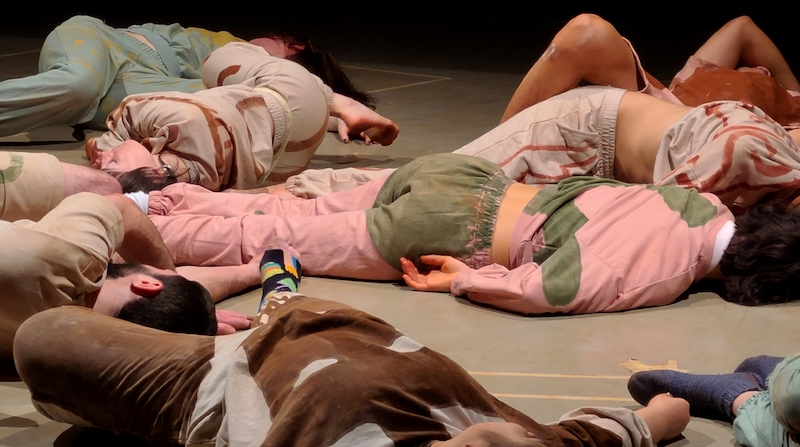
Valentina Karga: ‘Adaptation (Still),’ 2023 // Photo by Valentina Karga, © Valentina Karga
Nevertheless, when relaxation becomes an obligation, it can sometimes have an opposite effect. By pointing out the many new (and old) technologies at hand to aid our transition to inner peace (including yoga workshops held in the exhibition itself), Karga also manages to point out the ways we can become complicit in our own collective delusion. While it is not entirely clear whether this is her intention, it does seem clear that the “well beings” are not only here to assuage our fears about the state of our world, but they also have the potential to ignite them. And maybe this isn’t a bad thing.
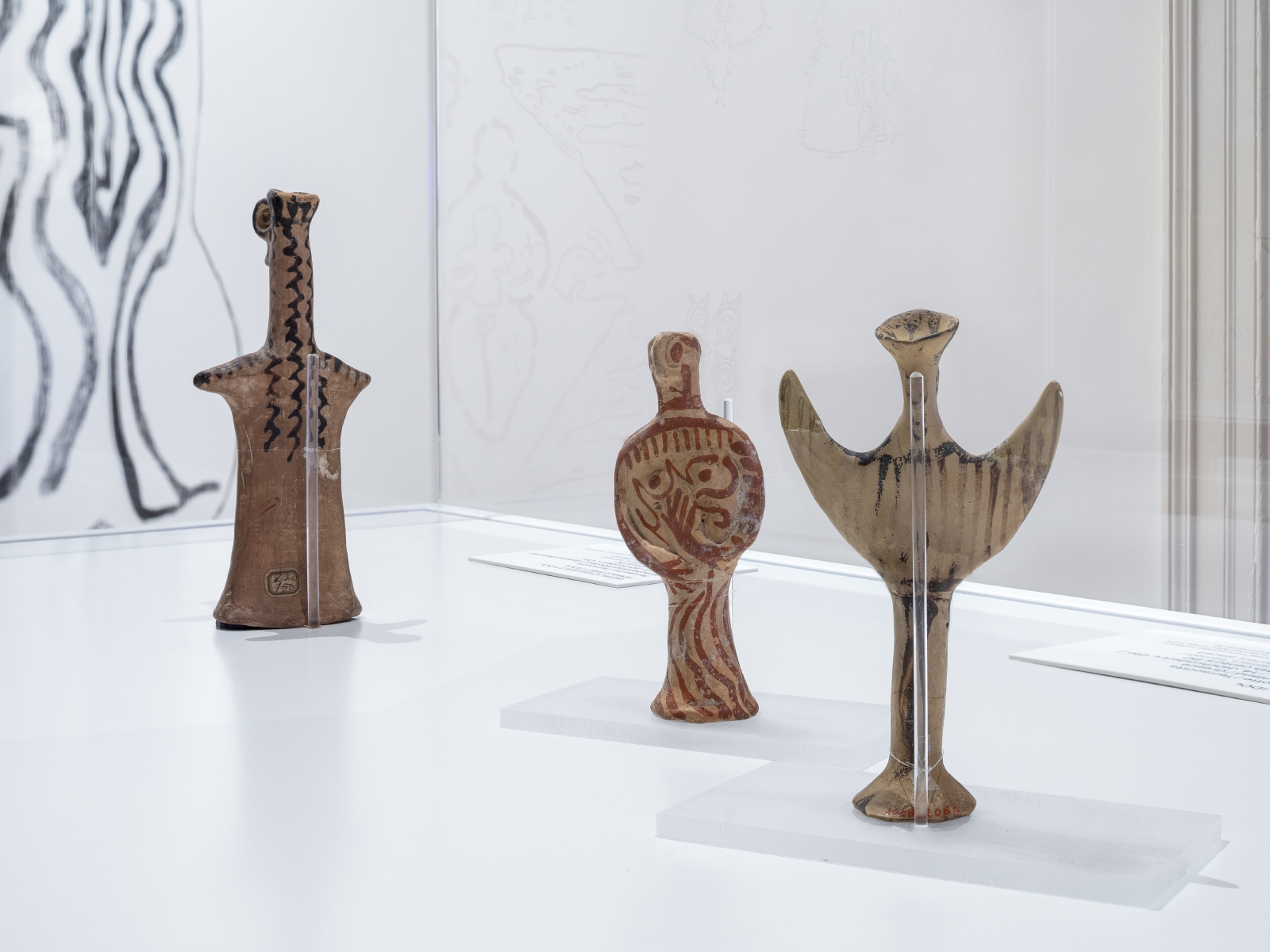
Valentina Karga: ‘Well Beings,’ 2023, installation view at Museum für Kunst und Gewerbe Hamburg // Photo by Henning Rogge, © Valentina Karga
A second room of the exhibition (which, I discover later, is meant to be visited first) houses clay and marble idols from the museum’s Antiquities Collection, which Karga cites as inspiration for her thinking enacted here. She observes that these figures could be models for us. Refusing to adhere to the binaries of male / female or human / nonhuman, they lead a hybrid existence, similar to the “otherworldly” quality I found present in her hallway illustrations. Karga argues that renewed attention to these non-binary traits can teach us “to free ourselves from the limitations of our human existence, reconnect with nature, and thereby find well-being.” Thus, the carefully-staged atmosphere of repose that Karga has created in the adjoining room can be read as not purely escapist. In its rather heavy-handed proposition to let go and “get comfy,” it might in fact inspire something else: an unsettling of our usual complacency and a necessity to dwell, for a moment, in that.
Exhibition Info
Museum für Kunst und Gewerbe Hamburg
Valentina Karga: ‘Well Beings’
Exhibition: Mar. 24–Sept. 3, 2023
Admission: € 14 (reduced € 8)
mkg-hamburg.de
Steintorplatz, 20099 Hamburg, click here for map

























